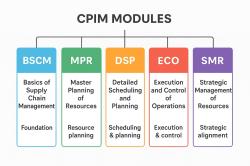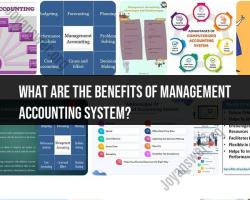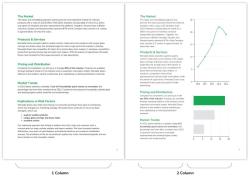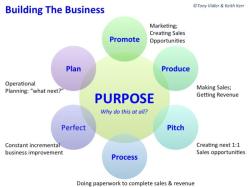What is expected from a business analyst?
Business analysts play a crucial role in helping organizations identify business needs, solve problems, and achieve their objectives. Their responsibilities often vary depending on the specific organization, industry, and project. However, here are some key expectations and responsibilities typically associated with a business analyst:
Requirement Analysis:
- Conduct thorough analysis and gather detailed requirements from stakeholders to understand business needs, goals, and objectives.
Stakeholder Communication:
- Act as a liaison between business stakeholders and the development team, ensuring effective communication and collaboration.
Documentation:
- Document and maintain clear, concise, and comprehensive requirements documents, user stories, and other relevant documentation.
Process Modeling:
- Model and analyze business processes to identify areas for improvement, efficiency gains, and optimization.
Data Analysis:
- Analyze and interpret data to provide insights into business trends, patterns, and opportunities.
Problem Solving:
- Identify business problems, challenges, and opportunities and work collaboratively with stakeholders to develop solutions.
Feasibility Studies:
- Conduct feasibility studies to assess the viability of proposed solutions, considering factors such as costs, benefits, and technical feasibility.
Risk Assessment:
- Identify and assess potential risks associated with proposed solutions and work with stakeholders to develop risk mitigation strategies.
Prototyping and Mockups:
- Create prototypes, wireframes, and mockups to visualize and communicate proposed solutions to stakeholders.
Quality Assurance:
- Collaborate with quality assurance teams to ensure that deliverables meet specified requirements and standards.
Change Management:
- Assist in managing changes to project scope, requirements, and timelines, ensuring that changes are well-documented and communicated.
User Acceptance Testing (UAT):
- Work with end-users to plan and conduct user acceptance testing to validate that solutions meet user expectations.
Training and Support:
- Develop training materials and provide support to end-users during the implementation of new systems or processes.
Continuous Improvement:
- Identify opportunities for continuous improvement in business processes, systems, and workflows.
Collaboration with IT Teams:
- Collaborate with IT teams, developers, and other stakeholders to ensure that technical solutions align with business requirements.
Project Management Support:
- Provide support to project managers by contributing to project plans, timelines, and progress tracking.
Knowledge Transfer:
- Facilitate knowledge transfer between different teams and stakeholders, ensuring a shared understanding of business requirements.
Stay Informed:
- Stay informed about industry trends, best practices, and emerging technologies related to business analysis.
These expectations highlight the multifaceted role of a business analyst, which involves a combination of analytical, communication, and problem-solving skills. Successful business analysts are often adaptable, detail-oriented, and capable of working collaboratively across different functional areas within an organization.
Demystifying the Business Analyst Role: Deliverables, Outcomes, and Impact
Business analysts play a crucial role in bridging the gap between business needs and technological solutions. Their work encompasses a range of responsibilities, but ultimately, they are expected to deliver results and make a tangible impact on their organizations. Let's delve into the expectations, success metrics, and communication strategies for these versatile professionals:
1. Deliverables and Outcomes:
- Requirements Gathering and Analysis: Understanding and documenting business needs, user experiences, and functional specifications through interviews, surveys, and data analysis.
- Process Improvement and Optimization: Analyzing existing processes, identifying inefficiencies, and proposing solutions for streamlining workflows and enhancing efficiency.
- Project Management and Communication: Collaborating with stakeholders, managing project timelines, and ensuring clear communication throughout the development and implementation process.
- Solution Design and Documentation: Defining system functionalities, creating prototypes, and developing technical specifications for software development teams.
- Data Analysis and Reporting: Collecting, analyzing, and interpreting data to provide insights that inform business decisions and measure project success.
2. Measuring Success and Impact:
- Tangible Outcomes: Increased revenue, improved operational efficiency, reduced costs, enhanced customer satisfaction, and successful project completion within budget and timeframe.
- Stakeholder Feedback: Positive testimonials from project stakeholders, including team members, executives, and end-users, highlighting the value delivered by the business analyst.
- Data-Driven Metrics: Metrics that track specific improvements attributable to the business analyst's contributions, such as reduced error rates, increased customer conversion rates, or improved process flow times.
- Return on Investment (ROI): Demonstrating how the business analyst's work has generated financial benefits for the organization, justifying their role and contributing to overall cost-effectiveness.
3. Performance Metrics and KPIs:
- Requirements Quality: Completeness, accuracy, and clarity of documented requirements, measured through defect rates, rework efforts, and user satisfaction surveys.
- Communication Effectiveness: Timely and clear communication with stakeholders, assessed through project feedback, progress reports, and meeting minutes.
- Analytical Skills: Ability to gather, analyze, and interpret data, measured through the impact of insights provided and their contribution to informed decision-making.
- Project Management Success: Successfully delivering projects within budget and on time, measured through milestones achieved, adherence to timelines, and resource utilization.
4. Proactive Communication and Demonstrating Value:
- Regularly update stakeholders: Share progress reports, highlight successes, and address potential concerns proactively.
- Quantify contributions: Use data and metrics to demonstrate the tangible impact of your work and how it aligns with organizational goals.
- Build relationships: Develop strong relationships with team members, stakeholders, and executives to understand their needs and effectively communicate the value you bring.
- Become a trusted advisor: Share insights, recommend solutions, and contribute to strategic decision-making, building your reputation as a valuable asset.
5. Adapting to Change:
- Embrace agility: Be flexible and adaptable to changing requirements, shifting priorities, and new technologies.
- Continuous learning: Stay updated on industry trends, tools, and methodologies to remain relevant and effective.
- Embrace stakeholder feedback: Be open to feedback and willing to revise your approach based on changing needs and circumstances.
- Proactive problem-solving: Anticipate potential challenges and be prepared to propose solutions with minimal disruption to project progress.
In conclusion, business analysts are not just about deliverables; they are about delivering impact. By understanding their expected outcomes, demonstrating their value through measurable contributions, and adapting to changing needs, business analysts can thrive in their roles and become indispensable assets to their organizations.
Remember, the key is to focus on the end goal, communicate effectively, embrace constant learning, and be the bridge that connects business needs to successful solutions.













